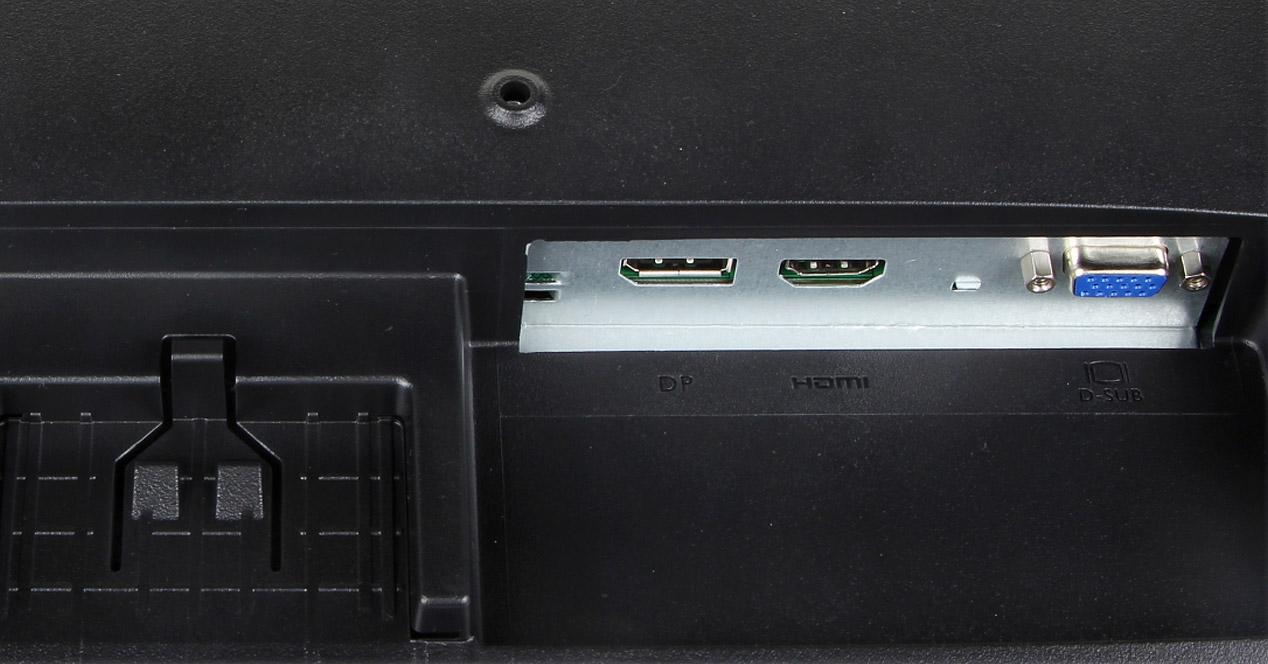For this reason, today we are going to see the different types of connectors for a monitor, which ones are used, which ones are not, and of course which one is best suited to our PC.
hdmi
This type of connector has become the one that usually comes by default in the vast majority of monitors on the market (unless it is an exceptionally low-end model, of course). This type of connector has gone through different versions which, although they are all compatible with each other, have improved some functionality of this connector on the monitor. The main improvement lies in the possibility of use VRR (Variable Refresh Rate) on the monitor, instead of always having the same fixed vertical refresh rate on our screen. Although this functionality only began to be applied when the 1.4 revision of this connector arrived. The most modern version is HDMI 2.0.
If in a monitor we only have the HDMI connectorplus the other two above (either one of them or both at the same time), the best connector what you can use is hdmi. This, in addition, has the advantage of being able to receive the audio signal from the computer.
Mini HDMI
It’s much less used than its older sibling, but some monitors on the market are using it, although due to the push of the larger version, it doesn’t seem to have much time to live on as such, and even less if we take into account that it does not support the latest standards in terms of versions and speed.
Although it has to be named, because some of you need to know the port, either for personal reasons or for work in your industry.
Display Port
The DisplayPort connector was supposed to replace the HDMI connector for computer displays, whether desktop or portable. However, its initial price made its initial acceptance quite restricted and therefore its arrival in this world is still quite limited. This type of connector for the monitor was the first to support the VRRas well as HDR10.
A special feature of the DisplayPort standard is that it allows chain the connection of several monitors, being only the first of them connected to our computer. Of course, it is necessary that the monitor has both an input connector for DisplayPort and an output connector.
In general, if your monitor supports both HDMI and DisplayPort, the Best option is you using the connector Display Port. Even more so if it is a gaming monitor with high vertical image refresh rates and compatible with AMD FreeSync or NVIDIA G-SYNC.
Mini-DisplayPort connector
This connector is nothing more than a Reduced version in connector size Display Port original. It was originally developed by Apple for its laptop computers, although it is currently being developed concurrently with the full-size DisplayPort connector.
USB-C
This type of connector is a fairly recent arrival on the computer monitor market. In performance, it is very similar to the connector Display Port which we have seen above. And it also allows the concatenation of monitors that the DisplayPort standard allows. But its advantage over the rest of the connectors that we have seen before is that this type of connector is able to to feed also for monitor. This allows users to have fewer cables to manage at their desk, if they want connect a second monitorto your personal computer.
Currently, there are not many monitors or graphics cards that support the USB-C standard in them. And these types of connectors are usually only seen on fairly high-end monitors.
Types of unused monitor connectors
As we explained at the beginning, there are connectors that in the vast majority of cases are no longer used and some have even ceased to be implemented in the industry, leaving only a few models in production that are already more than veterans.
But there are users and companies that need them because there are PCs or GPUs that must include one of these monitor connectors to continue working, because it is closely related to a certain program and certain machinery in the vast majority of cases.
VGA
Probably the oldest connector used on today’s monitors. This connector was already used with older CRT type monitors. The kind of sign that you receive from the graphics card is analog (This is the only connector that still uses the analog signal) and must be converted to digital by the monitor itself. The picture resulting from this transformation lack a lot definitionand should be avoided by enthusiasts at all costs.
DVI and its variations
This connector should have replaced the VGA connector years ago, but it took a long time to set up. The sign of the video you receive is digital full and maximum resolution that it is able to represent is 2560 x 1600 pixels (if a Single Link cable is used) or 3840 x 2400 pixels (if a Dual Link cable is used).
Even so, it is a type of connector that to suffer totally with the prices vertical cooling, to the point that, for resolutions higher than WQXGA, the maximum vertical refresh rate is 60 Hz, while for WQUXGA resolution, the maximum rate is only 30 Hz.
Nail disadvantage from the DVI connector is that it also cannot receive the sound signal on the monitor. The DVI connector can be used perfectly in monitors with resolutions no higher than WQXGA, although it is more common to see it in monitors con Full HD resolution.
The connector Micro DVI it was so residual that, honestly, it did not arrive as it is in our country in volume and everything that arrived was imported. In fact, the industry quickly pushed it out of the market, but like Mini HDMI, it had to be named.
What are the best connectors to use with our PC monitor?
In general, we can tell you that VGA and DVI connectors are obsolete connectors, so it is better not to use them. the hdmi It’s a good all-terrain connector that will serve you very well in almost any circumstance.
USB-C, at the moment, is a fairly niche connector, which we don’t know if it will eventually become very popular. So the best connector to use with your monitor is the DisplayPort, in case you have it. In case of lack, the HDMI connector will serve you perfectly.
Keep in mind that in most cases these last two are present in almost all monitors and in fact VESA specifies different uses for each of them. In terms of performance, DisplayPort is superior to HDMI, at least in its two latest versions of the standard when comparing DisplayPort 2.0 vs HDMI 2.1 as such.
The former focuses exclusively on PC, while the latter is all-terrain. Due to the market niche we find ourselves in, DisplayPort is the way to go if what you want is the best performance in any scenario, leaving HDMI for consoles and other less demanding devices.
Table of Contents















